- Home
- Jerold Last
The Ambivalent Corpse (Roger and Suzanne South American Mystery Series Book 1)
The Ambivalent Corpse (Roger and Suzanne South American Mystery Series Book 1) Read online
THE AMBIVALENT CORPSE
By Jerold A. Last
All Rights Reserved
Copyright 2011 © Jerold Last
Cover photograph of Iguazu Falls Copyright 2011 © Elaine Last
This is a work of fiction. Any resemblance to real people, living or dead, is purely coincidental. Names and locations of real places are used as settings for this story in a fictional sense.
ACKNOWLEDGEMENTS
I want to thank all of our very special friends in Montevideo who made us feel like it was home while we lived there and have enriched our lives since then with their continuing friendship. My wife, Elaine, helped with countless rounds of editing and refreshing my memory about details of places and things we did. Thanks also to my new friends on Goodreads who read a draft of the book and made several helpful suggestions. Suzanne, Roger, and I want to especially thank Barbara Linderholm, who also read a draft of the book, for suggesting that Roger and Suzanne meet the Krautliebers. Elaine and I took the ride to Florida and stayed on the dude ranch there, but the description of the rest of the drive up Route 5 is based on our good friend James Lapsley’s journal of what he did and saw while he was a Fulbrighter in Montevideo several years ago. Jim also donated the observations about Michael Jackson, the Dodgers, and driving on the Ramblas, and shared his embassy visit experiences in 2003, which closely matched mine with our embassy in Montevideo in 1982. Elaine and I flew to and from Iguazu Falls for our visit so the drive through Eastern Paraguay is from the author's imagination and information from the Internet. I've twice been a visiting Fulbright Professor for a semester at the Facultad de Quimica in Montevideo, the first time in 1982 during the military dictatorship and the second time in 1999 (accompanied by Elaine) after the current democracy had come to power. I've been back to visit there and collaborate on research with my Uruguayan colleagues several times since with generous support from the National Institutes of Health’s Fogarty International Center. Roger and Suzanne’s dinner with the head of the Uruguayan Nazi Party in the novel is not complete fiction; I had a memorable dinner with the titular head of the Uruguayan Nazi Party ("Bernardo", not "Juan"), who was the husband of one of my hosts in 1982. Finally, the Guarani legends of Porá-sy and the origin of Iguazu Falls are authentic according to several sources. I drew heavily on Wikipedia for the details I included in Chapter 9. The updated Aryan version of the legend according to Carlos de Silva is fiction, I believe.
Key places from the story and where they are in South America.
1. Montevideo
2. Buenos Aires
3. Rivera, Uruguay and Livorno, Brazil.
4. Sao Miguel do Oeste, Brazil.
5. Iguazu Falls, Brazil, Iguazu Falls, Argentina, and Ciudad del Este, Paraguay.
TABLE OF CONTENTS
Chapter1.The Ambivalent Corpse Appears
Chapter2.The Rest of the Day
Chapter 3.A Day On My Own in Montevideo
Chapter 4.The Dude Ranch
Chapter 5.North to the Border
Chapter 6.Brazil
Chapter 7.Iguazu Falls
Chapter 8.Paraguay
Chapter 9.Argentina and Brazil, Briefly
Chapter 10.Back to Montevideo
Chapter 11.A Feria and a Bund Meeting
Chapter 12.A Day in Buenos Aires
Chapter 13.Dinner With the Nazis
Chapter 14.Punta del Este
Chapter 15.Denouement
Chapter 16.Los Angeles, the End
Map of key places in the story
To find other books by the author
Chapter1. The Ambivalent Corpse Appears
We found the corpse on a rocky stretch of beach in Montevideo, about a mile east of the harbor. Pieces of the body were apportioned equally between the Graf Spee Memorial and the Holocaust Memorial, which are side by side on a grassy knoll overlooking the Rio de la Plata shore facing Buenos Aires to the south. Because of her strategic location shared between two antithetical monuments, one to the German warship scuttled near Montevideo Harbor in 1939 and the other to the victims of Nazi genocide in World War II, the Uruguayan press named her “The Ambivalent Corpse” (“El Cadáver Ambivalente”). But I’m getting ahead of myself in telling this story.
Early the morning after Suzanne and I arrived in Montevideo, the capital of Uruguay, we began a long run to start adjusting to the 4-hour time difference from California. Hopefully, the run would help us make up for only 4 hours of sleep. When dinners end at midnight as is typical for Uruguay, people sleep as late as they can the next morning. Thus the streets were mostly deserted. I better understood why the tradition of the siesta, or noon-3 PM nap, became institutionalized in Spain and Latin America hundreds of years earlier.
After walking south and east from the hotel to the Rambla as a warm-up we ran east towards Punta Carreta at a pretty fast pace. Traffic at this hour was light. The Rambla was deserted at this hour except for a few older folks walking their dogs. Since everybody in Montevideo lived in an apartment, the dogs were small. So were most of the people at the end of the leashes.
Our run lasted only as far as the park with the lake on our left and the Maritime Museum, the Graf Spee Memorial, and the Holocaust Memorial on our right. Beyond the Museum was the Rio de la Plata. Far out of sight across the river was Argentina. Suzanne and I were the only live people visible anywhere in this area. It was impossible not to see the pieces of dead body lying by the two Memorials so we stopped and checked things out. Pieces of body were apportioned half and half between the Graf Spee Memorial and the Holocaust Memorial. The victim was a young woman who had almost certainly been murdered.
The Graf Spee Memorial features a six-inch cannon salvaged from the wreck and an explanatory plaque. The body parts were carefully placed around the concrete base the cannon is mounted on. Beside the Memorial was almost half of a dismembered corpse: a jean-covered leg beside an arm covered by the sleeve of a sweater, and the top half of the torso minus its head. The half-body was dressed in what was left of a turtle-necked sweater and obviously had belonged to a woman. She looked to have been young and in pretty good shape. There was very little blood visible, just the body parts.
The Holocaust Memorial is a large inscribed chunk of rock sculpture pulled away from a 350-foot long wall. The rest of the body parts were placed symmetrically around the base of the plaques. Next to the Memorial was the remaining half of the dismembered corpse: the other jean clad leg, the other sleeved arm, and the bottom half of the torso from the waist down to the groin area. This half-body was dressed in what remained of her jeans and matched the top half in gender and size. The parts would fit together like the pieces of a life-sized jigsaw puzzle.
Lying precisely between the two halves of the corpse was its head. The victim had long dark hair and was mid-20s to 30-ish and good looking. From the overkill brutality it seemed that the murderer was really pissed off at her.
Despite my years as a homicide detective in Los Angeles and the many dozens of murder scenes I've investigated, the brutality and the cold-blooded theatricality of this murder scene caused my stomach to lurch. Years of training kicked in to make me seem a lot calmer than I actually was.
Suzanne turned a pale shade of green. I turned her gently away until she was no longer looking at the body.
"Take a couple of deep breaths," I said. "Her suffering is finished. Think of it as if you were taking your old gross anatomy lab. What can you learn from what you see? Let your brain take over. You can handle this."
She buried her face in my
chest and trembled for a few moments while I held her tightly against my body. Then she tilted her head back and looked up at me.
"I can do that," she said in a barely audible whisper, took a deep breath, and said again, this time in her normal voice, "Yes, I can do that."
Suzanne gulped a few times, but managed to avoid contaminating the crime scene with what remained of last night's dinner. She got her feelings under control and was careful to look anywhere else except directly at the body parts. I did the exact opposite and studied the body carefully. I'd never seen a murder scene laid out so deliberately and precisely before. The victim was killed and butchered so brutally that the killer couldn't be allowed to get away with this savagery. For the first time in many years, I missed my former career as a cop investigating murder cases.
We had to find a telephone and call the police. I flagged down a passing empty cab from the wide boulevard by the Rambla. Fortunately the driver had a cell phone and contacted the police almost immediately. The first police car was there within 3 minutes. Within 20 minutes a crowd of cops was standing around staring at the remains. Suzanne and I stood out of the way and waited for the detectives. I looked at the scene carefully and observed all of the details I could.
Things were much too clean for this to have been the site of a bloody dismemberment. Obviously the body parts had been moved here after they were cut into seven different pieces. They were carefully arranged and displayed to send someone a message. The killer, or more likely killers, obviously thought their message was important enough to take some serious risks. Transport of body parts and setting up the display was very risky because the nearest place to park a car was at least several hundred yards away. I guessed that forensic evidence would be non-existent.
I couldn’t see any obvious wounds. A pathologist would have to determine cause of death. Drowning was a possibility, but no shark or marine animal could have dismembered a corpse so neatly. Time of death might also be difficult to determine if the body had been in cold water. The clothing looked wet. Either the corpse had been in the river or the clothes were wet from early morning dew. Forensic analysis of whether the water was brackish or fresh would decide this since the Rio de la Plata at Montevideo is a tidal estuary of the Atlantic Ocean. It fills with fresh water when the tide goes out and becomes a mixture of fresh and salt water when the tide comes in.
The detectives got there several minutes later and we became the guests of honor. Two of the detectives, both named Gonzalez, were responsible for questioning us. Detective Gonzalez on the left looked like Columbo on TV---including the rumpled trench coat. He was slim, middle aged, short, and wore glasses. My first impression was that he also had the TV Columbo’s brains and cunning. Detective Gonzalez on the right was also short, younger, better dressed, and better looking. My gut feeling about Detective Gonzalez the younger was that he was “cute”. Columbo was definitely the leader of the pair.
We stood there in our running gear of shorts and t-shirts covered with sweat and feeling sartorially disadvantaged. Even without makeup and midway through a long run on a hot and humid day Suzanne still looked beautiful. At my height of six feet two inches, I towered over both of the cops. At five foot eight, Suzanne was also a good bit taller than either of the cops. Suzanne's long blond hair, tucked under a baseball cap with a ponytail sticking out of the back, bounced each time she nodded her head. Both of us were lean and in very good shape from our martial arts training and running. Neither of the two detectives could miss seeing Suzanne's full breasts and appropriate curves under her skimpy running gear, but their stares were discreet.
Suzanne, who is fluent in Spanish, answered the same questions from Columbo over and over for the next hour. I understood enough Spanish to follow most of the questions, but I wasn’t fluent enough to answer carefully so Suzanne took the lead.
Columbo asked her in a deliberately aggressive tone, "What are you doing here at such an early hour?"
Suzanne calmly explained, "It's considered normal for us to get up at 6 AM to go running in the U.S., even if that's considered to be strange and unusual behavior in Uruguay. Most of the people in the USA are expected to be at their jobs by 8 AM, so if we want to run to stay in shape we have to get up early to do it. We eat dinner at 6 or 7, so we can get to bed at a reasonable hour, unlike Uruguay where going to bed at 2 AM is the norm. Maybe," she suggested sweetly, "that's why the economy of the U.S. is so much more productive than that of Uruguay?"
Columbo realized that he had just been told, ever so politely, that he was being a jerk. He asked in a much more respectful tone, "Which specific flights were you on and when did you actually get here?"
Suzanne answered "I don't remember the specific flight numbers but you can get that information from the airline when you check whether we were really on the flights I tell you about. We took American Airlines the whole way from Los Angeles to Miami to Buenos Aires to Montevideo. We left Los Angeles two days ago and arrived here early yesterday afternoon."
The detective asked, politely again, "Can you account for your whereabouts for the rest of the day yesterday?"
Suzanne answered, "Certainly. We went for a walk and took a short nap in the afternoon after checking in to the Balmoral Plaza Hotel. Dinner was at the Mercado del Puerto with my new colleagues Gerardo and Andrea followed by a tango club afterward, so they can vouch for our whereabouts from 9 PM until at least 2:30 AM."
Then came the question "What are we doing here in Montevideo?"
Suzanne was ready for that one. "Our colleagues Gerardo and Andrea can also vouch for why we're here. Formally, I'm here as Professor Foster from UCLA visiting the University de la Republica as an invited Distinguished Professor of Biochemistry. I have an NIH grant from the U.S. Government to pay for my travel to Montevideo to interact with the university and to do a small research project collecting samples of DNA from exotic plants while I'm here. The handsome gentleman with me is my friend Roger Bowman, who is here on vacation to keep me company while we both visit Uruguay for the first time."
The corpse obviously had been dead since the previous night, or longer, and was killed elsewhere. We could possibly have killed her chronologically, but that wasn't likely, so we were eventually treated courteously as potential witnesses rather than as suspects. The detectives finally took our local contact information and released us to go back to the hotel.
Columbo, whose business card said he was Detective Lieutenant Martin Gonzalez, asked us, "Can you come to the police station to sign your formal statements this afternoon?" Although couched as an invitation, it was clearly a demand.
The run had been spoiled for us, so we jogged back to the hotel for breakfast and a shower. It was already late for breakfast, which was served buffet style in its own dining room on the second floor, and we barely made it in before the room was closed and locked. A sparse selection of cold meats, cheeses, rolls, breads, cereals, yogurt, fresh fruit juices, and coffee was still available. Orange juice, granola with liquid unflavored yogurt, a couple of small rolls with ham and cheese, and (eventually) several cups of coffee were consumed.
Back in the room we shared a shower and a bar of soap and took a short nap for an hour. Next was an exploratory walk to see what the immediate neighborhood of the hotel was like. It looked like the broad 18th of July Avenue, a largely commercial (stores and shops) avenue with lots of high-rise office and government buildings on both sides of the street. We stopped to enjoy the gardens and greenery at a small plaza with a nice park. About a Km further on was a major intersection of two broad avenues, July 18th and Constitution, where we stopped for a quick sandwich.
I had a Milanesa “Canadian style” sandwich--- thinly sliced beef (probably flank steak) dipped in a batter of egg and bread and fried, with lettuce, tomato, cheese, and ham---with papas fritas (French-fried potatoes). For cholesterol addicts, the “American style” version adds a fried egg on top of the “Canadian” mixture. Suzanne had a Chevito sandwich---also available in the “Ame
rican” and “Canadian” versions, with just the very thin slice of beef, lettuce, and tomato as a base--- with potato chips. A shared bottle of cold agua con gas was refreshing to drink. Service was quick and efficient. The sandwiches were eaten in less than 20 minutes.
Our map showed we were less than a mile from the Facultad de Quimica of The Universidad de la Republica. We followed a circuitous route north on narrow streets through a small piece of downtown Montevideo, passing through an older and somewhat less affluent residential neighborhood. The architecture was boring and the streets were dirty and filled with loose garbage and small plastic bags blowing around in the gentle breeze. The buildings were poorly maintained. It looked a lot like the less well-maintained neighborhoods in the older cities in the mid-western USA and the east coast during a garbage workers strike.
We found the large plaza that housed the Palacio Legislativo (Legislative Palace), Uruguay’s Senate and House of Representatives, which was more than 100 years old and looked its age. The outside bore the scars of civil unrest in the 1970s, with multiple bullet holes pocking its granite walls. In its day it really had been a “palace”. Across a broad avenue and a large plaza was the Facultad de Quimica, also housed in a poorly kept building from the 19th century. There was lots of stone and marble, and faux Greek columns on the front side of the only entrance to the Facultad de Quimica facing the Medical School. Framing the front entrance were two large and tired looking old palm trees, probably planted when the building was built. The Facultad de Medicina was housed in an almost identical building of 19th century vintage across a narrow street from the College of Chemistry.

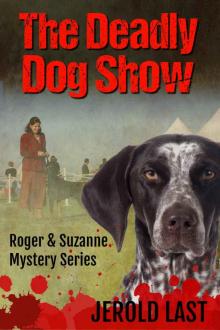 The Deadly Dog Show (Roger and Suzanne South American Mystery Series Book 6)
The Deadly Dog Show (Roger and Suzanne South American Mystery Series Book 6)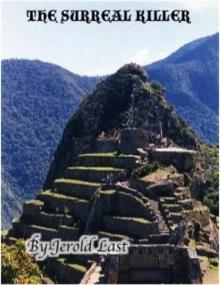 The Surreal Killer (Roger and Suzanne South American Mystery Series Book 2)
The Surreal Killer (Roger and Suzanne South American Mystery Series Book 2)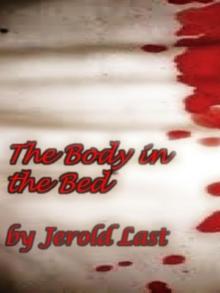 The Body in the Bed (Roger and Suzanne South American Mystery Series Book 5)
The Body in the Bed (Roger and Suzanne South American Mystery Series Book 5)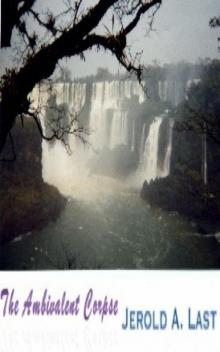 The Ambivalent Corpse (Roger and Suzanne South American Mystery Series Book 1)
The Ambivalent Corpse (Roger and Suzanne South American Mystery Series Book 1) Unbearably Deadly (Roger and Suzanne South American Mystery Series Book 9)
Unbearably Deadly (Roger and Suzanne South American Mystery Series Book 9)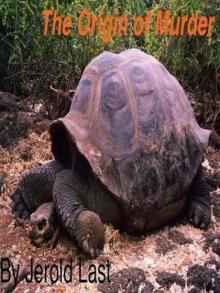 The Origin Of Murder (Roger and Suzanne South American Mystery Series Book 8)
The Origin Of Murder (Roger and Suzanne South American Mystery Series Book 8)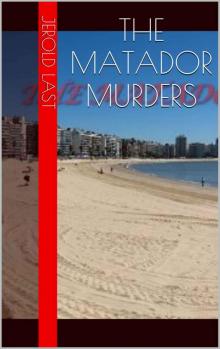 The Matador Murders (Roger and Suzanne South American Mystery Series Book 4)
The Matador Murders (Roger and Suzanne South American Mystery Series Book 4)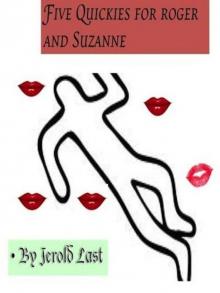 Five Quickies For Roger And Suzanne (Roger and Suzanne South American Mystery Series Book 7)
Five Quickies For Roger And Suzanne (Roger and Suzanne South American Mystery Series Book 7)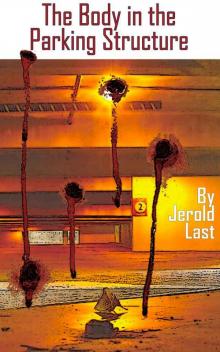 The Body in the Parking Structure (Roger and Suzanne South American Mystery Series Book 4)
The Body in the Parking Structure (Roger and Suzanne South American Mystery Series Book 4)